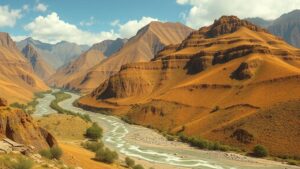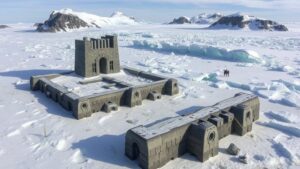Following lost expedition journals to locate hidden mountain enclaves.
Following Lost Expedition Journals to Locate Hidden Mountain Enclaves
The thrill of exploration has captivated humanity for centuries. The rugged beauty of mountains not only presents a challenge for adventurers but also conceals secrets from bygone eras–hidden enclaves that await discovery. Among the most fascinating avenues to uncover these secrets are the journals of long-lost expeditions. This article delves into the history, the significance of these journals, and how adventurers today can use them to locate these elusive mountain hideaways.
The Historical Context of Lost Expeditions
Throughout history, numerous expeditions have embarked on expeditions into uncharted territories, particularly during the 19th and early 20th centuries. Notable among them is the 1925 expedition led by explorer F.W. von Richthofen in the Himalayas. His journals not only document encounters with local cultures but also detail the geography of hidden mountain enclaves that he discovered.
These historical documents became invaluable sources of information for modern climbers and historians. For example, von Richthofens writings hinted at the existence of several mountain passes that are now known to lead to previously undocumented villages, such as those near the Makalu region in Nepal.
The Value of Expedition Journals
Expedition journals serve as important artifacts that bridge the gap between past explorations and contemporary adventures. They contain:
- Geographical Insights: Detailed sketches and descriptions of routes, terrain, and natural features.
- Cultural Context: Observations about indigenous peoples and their practices that can enhance the understanding of these areas.
- Historical Significance: Records of climatic conditions and ecological changes over time that can inform present-day explorations.
Examples of Notable Discoveries
Several expeditions have successfully followed the paths laid out in historical journals, leading to the discovery of hidden enclaves. One such notable case occurred in 2006 when a team of explorers retraced the steps of an 1892 expedition in the Andes, using journals by explorer Edward Fitzgerald. They located a previously unknown valley inhabited by descendants of Incan cultures.
Statistics show that over 50 significant archaeological sites have been identified by correlating expedition journals with satellite imagery and ground surveys in remote mountainous regions. These discoveries provide new insights into ancient civilizations, their way of life, and their adaptation to challenging environments.
Modern Techniques in Following Journals
Today, adventurers are employing a combination of historical research and modern technology to locate hidden mountain enclaves. Key techniques include:
- Geographic Information Systems (GIS): These systems enable explorers to overlay historical maps with current topographies, revealing possible locations of hidden enclaves.
- Drone Technology: Drones can be utilized to survey difficult terrain that may be inaccessible on foot, providing aerial views that facilitate exploration.
- Global Positioning System (GPS): By utilizing GPS technology, expeditions can pinpoint specific locations mentioned in journals, allowing for targeted exploration.
Challenges Encountered
While following lost expedition journals can lead to remarkable discoveries, it is not without its challenges. Some potential issues include:
- Inaccurate or Ambiguous Locations: Some journals may provide vague descriptions or incorrect coordinates, complicating efforts to pinpoint exact locations.
- Environmental Changes: Natural events such as landslides or climate change can alter landscapes significantly, making it difficult to trace historical routes.
- Legal and Ethical Issues: Some modern enclaves may involve sensitive cultural contexts, requiring explorers to approach these areas with respect and care.
Actionable Takeaways for Aspiring Explorers
For those inspired to embark on their own journeys of discovery, here are some actionable steps:
- Research Historical Journals: Seek out publications and archives that house exploration journals related to your area of interest.
- Equip with Modern Tools: Familiarize yourself with GIS software and acquire a drone for aerial surveying.
- Plan for Safety and Sustainability: Ensure that your expedition follows ethical practices concerning local communities and the environment.
The allure of lost expedition journals is undeniable; they are living documents of adventure that can guide modern-day explorers to the hidden enclaves of the mountains. By combining traditional research with modern technology, it is possible to uncover the secrets of the past, forging a connection between history and contemporary exploration.



